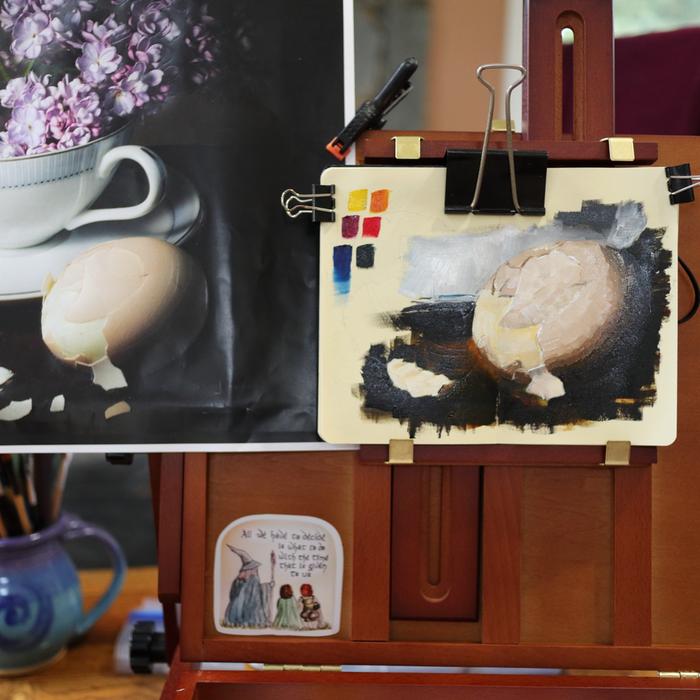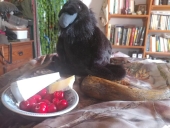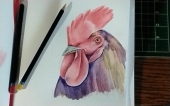
 12
12











 6
6












 5
5











 5
5











 4
4











 5
5











 9
9











 9
9











 15
15




r ranson wrote:But it's also the one book of the Discworld series that stayed with me more than any other. Images from it invade my daily life, especially now our lilac trees are making the majority of the hedgerow. And as time goes on, it becomes a powerful memory in my life. Perhaps I can read it again some day with the understanding I have now. In the book, the protagonist, Sam, deals with the grief of his memory, and the knowledge that his wife and love might die in childbirth on that day. ... There are deep emotions there.
How permies.com works
What is a Mother Tree ?
 17
17











 7
7




"The only thing...more expensive than education is ignorance."~Ben Franklin. "We can easily forgive a child who is afraid of the dark; the real tragedy of life is when men are afraid of the light." ~ Plato

 6
6




r ranson wrote:I bought this expecting it was wood, and it isn't. The goal is to rub linseed oil and clove essential oil into the wood to create a slick surface that smells of cloves. The small airspace combined with cloves would slow down the drying time of the un-painted oil paints. That's the theory. However, I can tell it's not wood because the places where I dropped essential oils and didn't rub it in for several seconds, are blistered. Essential oils like clove and rosemary oil are STRONG solvents. They dissolve all sorts of plastic and coatings easily.
How Permies works: https://permies.com/wiki/34193/permies-works-links-threads
My projects on Skye: The tree field, Growing and landracing, perennial polycultures, "Don't dream it - be it! "
 5
5




Nancy Reading wrote:Thank you for sharing your painting adventures - the result is already looking finished to me!
r ranson wrote:I bought this expecting it was wood, and it isn't. The goal is to rub linseed oil and clove essential oil into the wood to create a slick surface that smells of cloves. The small airspace combined with cloves would slow down the drying time of the un-painted oil paints. That's the theory. However, I can tell it's not wood because the places where I dropped essential oils and didn't rub it in for several seconds, are blistered. Essential oils like clove and rosemary oil are STRONG solvents. They dissolve all sorts of plastic and coatings easily.
I suspect it is the lacquer reacting. You could try sanding it all off, leaving just the wood underneath for next time? Or try and find another virgin box.







 6
6




Carla Burke wrote:R, thank you so much, for this thread! Learning about your process is very helpful, to me, and explains to me why I never went further with my own (admittedly not oil) painting. Even with good shading, I could never achieve more than what felt (to me) like a 'flat' result. It had never occurred to me to begin with a sketch on the canvas, then to do a grayscale underlay! Maybe an actual class or 50 would have made the difference, for me. You, my dear, are revealing the best 'secrets' to this particular 'me do it' girl! I always look forward to your next art adventure!







 5
5




"The only thing...more expensive than education is ignorance."~Ben Franklin. "We can easily forgive a child who is afraid of the dark; the real tragedy of life is when men are afraid of the light." ~ Plato
 6
6




![Filename: z-Thumbs-Up-3.jpg
Description: [Thumbnail for z-Thumbs-Up-3.jpg]](/t/280581/a/266379/z-Thumbs-Up-3.jpg)
 6
6




"The winter will ask what we did all summer" - Henry David Thoreau
 5
5




 9
9





 9
9











 5
5




I have Hobbit feet, but if I keep them shaved, no one notices.
 6
6




r ranson wrote:Black is a funny one.
The more I learn about painting, the more I feel beginners do best to stay away from it. It's too easy to forget it has hue (colour) and saturation (much-ness of the colour). It often gets treated like a value adjuster only and that's where new painters go wrong.
Lamp and ivory black are very good blue replacement because they are very dark values, low saturation, blue on the colour wheel. Mars falls more towards red and is useful when the shadows want to be warm.
But the more I paint, the more I feel that shunning black paint is sad. It's like not using the table saw because when we were four years old, it was forbidden. Trying to cut a sheet of plywood with a safety hand saw...it works, but not as well.
Untill about 1880, black was a well loved colour by the masters who recognized it had hue and saturation, in addition to value. Then something snapped and suddenly it became forbidden (in western Europe and north america, but not so much elsewhere)
I love choosing which colour of black works best for which situation. And when I need a black to behave differently than I can get it out of the tube, like a transparent black, I can quickly mix a chromatic one from three primaries.
Transparency and drying time also influence which colour black I choose. In this case mars black is one of the naturally fastest drying pigment there is. Nice and opaque to stand up to the bullying of Titanium white.
 6
6











 4
4











 4
4




Burra Maluca wrote:
Oh wow, that's just triggered a really deep and powerful memory in me too.
...
And a couple of weeks later when I was at my absolute lowest, another neighbour who kept a most awesome flower garden presented me with this. I still cry when I see it...







 2
2




Carla Burke wrote:R, thank you so much, for this thread! Learning about your process is very helpful, to me, and explains to me why I never went further with my own (admittedly not oil) painting. Even with good shading, I could never achieve more than what felt (to me) like a 'flat' result. It had never occurred to me to begin with a sketch on the canvas, then to do a grayscale underlay! Maybe an actual class or 50 would have made the difference, for me. You, my dear, are revealing the best 'secrets' to this particular 'me do it' girl! I always look forward to your next art adventure!







 2
2




Kelly Craig wrote:Paint me more than a bit impressed.







 2
2




Cheryl Loomans wrote:R, thank you for sharing the process and meaning of your painting. I can't wait to read more and excited to see the next layers.











Rebekah Curtis wrote:I LOVE THIS!
Many many many years ago, before I met my husband, I placed a personal's ad that said "Between Carrot & Vimes, who is the better man and why?" And that bait caught me a MUCH higher quality catch of prospective dates than my usual attempts at finding potential partners did, (but only 1 of them gave the 'correct' answer out of the dozen+ responses I got lol)


















 1
1











 3
3











 4
4




r ranson wrote:Update on the painting.
I finished the first colour layer but the photos are trapped on my camera and other drama means a few more weeks until I can share the story.
In the mean time, colour has wrecked an already dubious egg. I think it's dry enough I can take it to painting class and hopefully the teacher can help me corse correct.
 4
4























 4
4




r ranson wrote: most online painters never make mistakes so we never get to see how to fix them. I'm making lots of mistakes to fix.
How Permies works: https://permies.com/wiki/34193/permies-works-links-threads
My projects on Skye: The tree field, Growing and landracing, perennial polycultures, "Don't dream it - be it! "








 5
5




'What we do now echoes in eternity.' Marcus Aurelius
How Permies Works Dr. Redhawk's Epic Soil Series












 3
3











 2
2












|
She still doesn't approve of my superhero lifestyle. Or this shameless plug:
Freaky Cheap Heat - 2 hour movie - HD streaming
https://permies.com/wiki/238453/Freaky-Cheap-Heat-hour-movie
|





